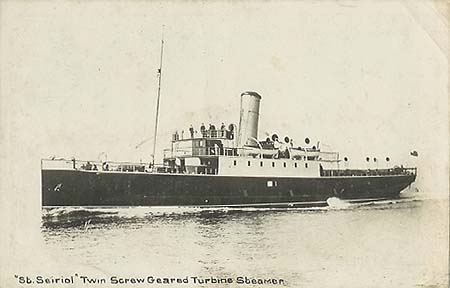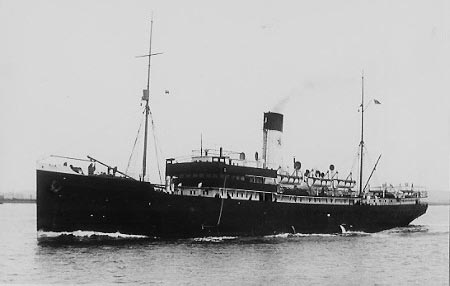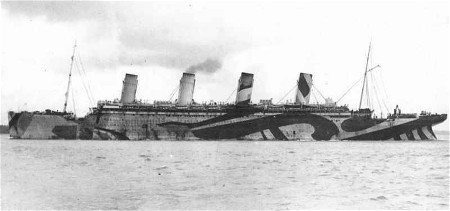|
Jul 23, 1879
|
Born in Orillia, Ontario
|
|
Mar 25, 1915
|
Attested into the 21st Battalion in Lindsay, Ontario
Ø Number 59597 (temporary number 1325)
Ø Next of kin given as Annie Lockard, sister, Cortes Island,
British Columbia
Ø Previous occupation given as Sheet Metal Worker
Ø No previous military experience given
Ø Religion given as Baptist
The 21st Battalion trained in the Kingston, Ontario
area through the winter of 1914-15.
|
|
May 6, 1915
|
Embarked the RMS Metagama in Montreal, Quebec

|
|
May 15, 1915
|
Disembarked in Devonport, England and the
battalion proceeded to the West Sandling Camp, near Hythe, Kent to continue
training
|
|
Sep 14, 1915
|
Embarked the St. Seiriol in Folkestone

|
|
Sep 15, 1915
|
Disembarked in Boulogne, France and the battalion
proceeded to St. Omer
|
|
Jun 11, 1916
|
Attached to the Camp Commandant in Dickebush,
Belgium for traffic control duties
|
|
Jun 21, 1916
|
Employed as traffic control at the Dickebush
Baths
|
|
Aug 1, 1916
|
Admitted to the No. 4 CFA (Canadian Field
Ambulance) with a diagnosis that reads NYD (Not Yet Determined). Transferred the same day to the No. 6
Canadian Field Ambulance
|
|
Aug 2, 1916
|
Transferred to the No. 5 Canadian Field Ambulance
and admitted to the rest station there when the diagnosis was changed to read
Neurasthenia
|
|
Aug 7, 1916
|
Discharged to duty from the rest station and rejoined the 21st
Battalion in billets in La Clytte, Belgium
|
|
Aug 12, 1916
|
Medical category changed to “TB” (Temporary Base)
meaning he was temporarily unfit for combat duty
|
|
Aug 13, 1916
|
Transferred to the No. 7 Stationary Hospital in
Havre
|
|
Aug 19, 1916
|
Transferred to the No. 4 CCD (Canadian
Convalescent Depot) and the diagnosis was changed to read Myalgia
|
|
Sep 16, 1916
|
Discharged from the convalescent depot and joined
the Canadian Base Depot in the Rouelles Camp, Havre
|
|
Sep 18, 1916
|
After leaving the base depot, Private Lockard
rejoined the 21st Battalion resting in Vadencourt, France
|
|
Oct 4, 1916
|
While in the front line on the Ypres Salient,
Private Lockard sprained his left ankle and was evacuated to the No. 10
Canadian Field Ambulance for first aid before being transported to the
Division Rest Station at the No. 6 Canadian Field Ambulance
|
|
Oct 7, 1916
|
Transferred to the No. 2 Canadian Field ambulance
and Myalgia was added to the diagnosis
|
|
Oct 8, 1916
|
Discharged to duty and rejoined the 21st
Battalion
|
|
Oct 16, 1916
|
Attached to the 255th Tunnelling
Company for duty
|
|
Jan 16, 1917
|
Rejoined the battalion from the tunnelling
company
|
|
Jan 22, 1917
|
Granted 10 days leave
|
|
Feb 7, 1917
|
Rejoined the battalion from leave
|
|
Mar 30, 1917
|
Awarded the Good Conduct Badge
|
|
Aug 6, 1917
|
Admitted to the No. 5 Canadian Field Ambulance
with a diagnosis that reads Incontinence of Urine and placed in the Rest
Station
|
|
Aug 9, 1917
|
Transferred to the No. 23 Casualty Clearing
Station
|
|
Aug 10, 1917
|
Transferred to the No. 22 General Hospital in Camiers
|
|
Aug 15, 1917
|
Transferred to the No. 6 CCD (Canadian
Convalescent Depot) in Etaples
|
|
Aug 17, 1917
|
Transferred to the No. 5 Canadian Convalescent
Depot in Cayeux
|
|
Sep 5, 1917
|
Discharged from the convalescent depot and
reported to the No. 2 CIBD (Canadian Infantry Base Depot) in Etaples
|
|
Sep 11, 1917
|
Classified as “PB” (Permanent Base) meaning he
was unfit for combat duty
|
|
Sep 26, 1917
|
Transferred to the 2nd Division
Employment Company
|
|
Feb 4, 1918
|
Granted 14 days leave
|
|
Feb 20, 1918
|
Rejoined the employment company from leave
|
|
Jul 6, 1918
|
Medical Board classified him B1 meaning he is
only fit for light duties behind the lines with a diagnosis of Myalgia
|
|
Jan 13, 1919
|
Granted 14 days leave
|
|
Feb 6, 1919
|
Transferred to the 21st Battalion but
remained attached to the 2nd Division Headquarters Sanitary
Section
|
|
Feb 8, 1919
|
Rejoined the 2nd Division Headquarters
from leave
|
|
Apr 3, 1919
|
Embarked the Western Australia in Havre, France
with the 21st Battalion

On arrival in England Private Lockard was
attached to “P” Wing in Witley for processing pending return to Canada
|
|
Apr 17, 1919
|
Transferred to the 2nd Division Pool
and attached to “H” Wing in Witley pending return to Canada
|
|
Apr 29, 1919
|
Medical Board in Witley notes
Ø Patient suffers from Myalgia
Ø Has stiff and painful joints,
more so during damp and wet weather
Ø Has trouble eating and
digesting normal diet, with occasional vomiting
Ø Has to get up 2 or 3 times in the night to
urinate
Ø Patient should return to normal
in 6 months
Ø Board recommends he be
returned to Canada for discharge
|
|
May 5, 1919
|
Transferred to the 2nd Canadian
Division Pool in Witley
|
|
May 10, 1919
|
Embarked the SS Olympic in Southampton

|
|
May 16, 1919
|
Disembarked in Halifax, Nova Scotia and proceeded
to Ottawa, Ontario where he was Taken On Strength Military District No. 3 Sub
Depot
|
|
May 19, 1919
|
Discharged from the CEF in Ottawa, Ontario
Ø Rank on discharge Private
Ø War Service Badge Class “A”
issued number 184560
Ø Proposed residence on
discharge St. Ann St., Toronto, Ontario
Following his discharge, the 1914-15 Star,
British War Medal and Victory Medals were sent to him at 338 George St.,
Toronto, Ontario
|
|